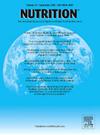与儿童肥胖有关的亲子微生物群关系:CORALS 辅助研究
IF 3.2
3区 医学
Q2 NUTRITION & DIETETICS
引用次数: 0
摘要
目标:全球儿童肥胖率持续上升。家庭肠道微生物可能与儿童肥胖有关。本研究旨在分析亲子间粪便微生物群组成的细菌相似性与体重的关系:方法:根据亲子对的体重状况将146对父子/母子分为以下四组:第一组,体重正常的父子/母子;第二组,超重/肥胖的父子/母子;第三组,体重正常的父子/母子;第四组,超重/肥胖的父子/母子。对所有参与者进行了人体测量和生活方式评估。微生物群特征通过 16S 核糖体 RNA 基因测序确定。通过逻辑回归模型确定任何细菌的丰度是否能够预测儿童肥胖。此外,还对接收者操作特征曲线进行了拟合,以确定细菌类群在正确识别儿童肥胖症方面的相对诊断强度:结果:三臼海卡氏菌(Catenibacterium mitsuokai)、星形普雷沃特氏菌(Prevotella stercorea)、皮格脱硫弧菌(Desulfovibrio piger)、马西里普雷沃特氏菌(Massiliprevotella massiliensis)和琥珀酸法氏杆菌(Phascolarctobacterium succinatutens)的缺失/丰富程度与体重家族相关。在体重状况方面,观察到来自父母的富含琥珀酸杆菌与来自儿童的富含马西利氏菌之间存在正相关关系(几率比,1.14,P = 0.013):本研究描述了五种潜在的肠道细菌,这些细菌可能与家庭体重状况关系有关,似乎有助于预测肥胖。本文章由计算机程序翻译,如有差异,请以英文原文为准。
Parent–child microbiota relationships involved in childhood obesity: A CORALS ancillary study
Objectives
Childhood obesity continues to rise worldwide. Family gut microorganisms may be associated with childhood obesity. The aim of the study was to analyze bacterial similarities in fecal microbiota composition between parent–offspring pairs as linked to body weight.
Methods
A total of 146 father/mother and offspring pairs were categorized into four groups according to the weight status of the parent–child pair as follows: group 1, parent and child with normal weight; group 2, parent and child with overweight/obesity; group 3, parent with normal weight and child with overweight/obesity; group 4, parent with overweight/obesity and child with normal weight. Anthropometric measurements and lifestyle assessments were performed in all participants. Microbiota characteristics were determined by 16S ribosomal RNA gene sequencing. Logistic regression models were performed to determine whether the abundance of any bacteria was able to predict childhood obesity. Moreover, receiver operating characteristic curves were fitted to define the relative diagnostic strength of bacterial taxa for the correct identification of childhood obesity.
Results
The absence/abundance of Catenibacterium mitsuokai, Prevotella stercorea, Desulfovibrio piger, Massiliprevotella massiliensis, and Phascolarctobacterium succinatutens was involved in body weight family associations. A positive relationship between P. succinatutens richness from parents and M. massiliensis from children was observed with regard to body weight status (odds ratio, 1.14, P = 0.013).
Conclusions
This study describes five potential gut bacteria that may be putatively involved in family weight status relationships and appear to be useful for predicting obesity.
求助全文
通过发布文献求助,成功后即可免费获取论文全文。
去求助
来源期刊

Nutrition
医学-营养学
CiteScore
7.80
自引率
2.30%
发文量
300
审稿时长
60 days
期刊介绍:
Nutrition has an open access mirror journal Nutrition: X, sharing the same aims and scope, editorial team, submission system and rigorous peer review.
Founded by Michael M. Meguid in the early 1980''s, Nutrition presents advances in nutrition research and science, informs its readers on new and advancing technologies and data in clinical nutrition practice, encourages the application of outcomes research and meta-analyses to problems in patient-related nutrition; and seeks to help clarify and set the research, policy and practice agenda for nutrition science to enhance human well-being in the years ahead.
 求助内容:
求助内容: 应助结果提醒方式:
应助结果提醒方式:


